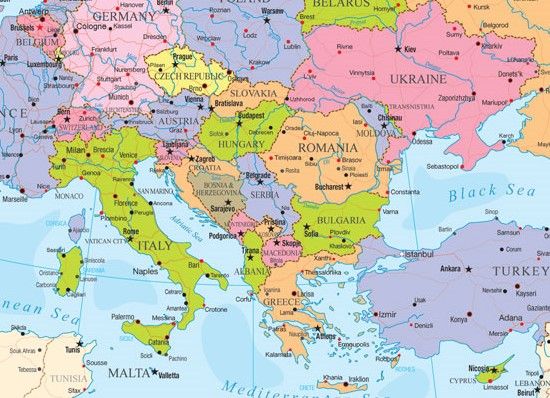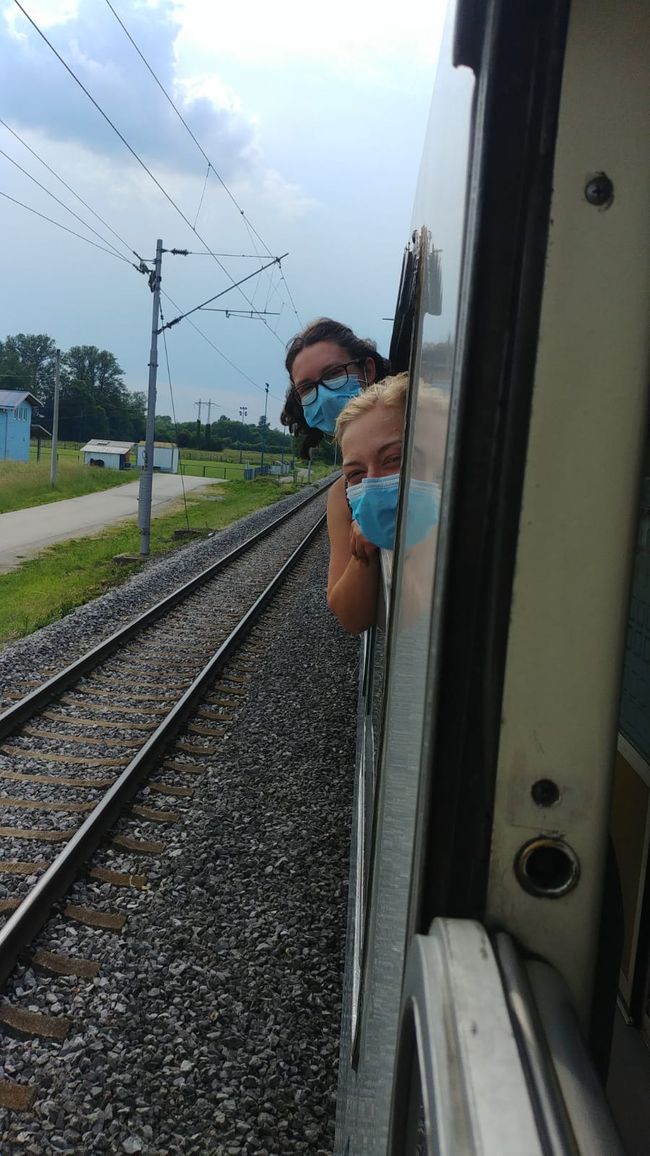
interrail-statt-transsib
vakantio.de/interrail-statt-transsib
Naples - more than just Margherita Pizza (Stop 26)
Wotae: 03.08.2021
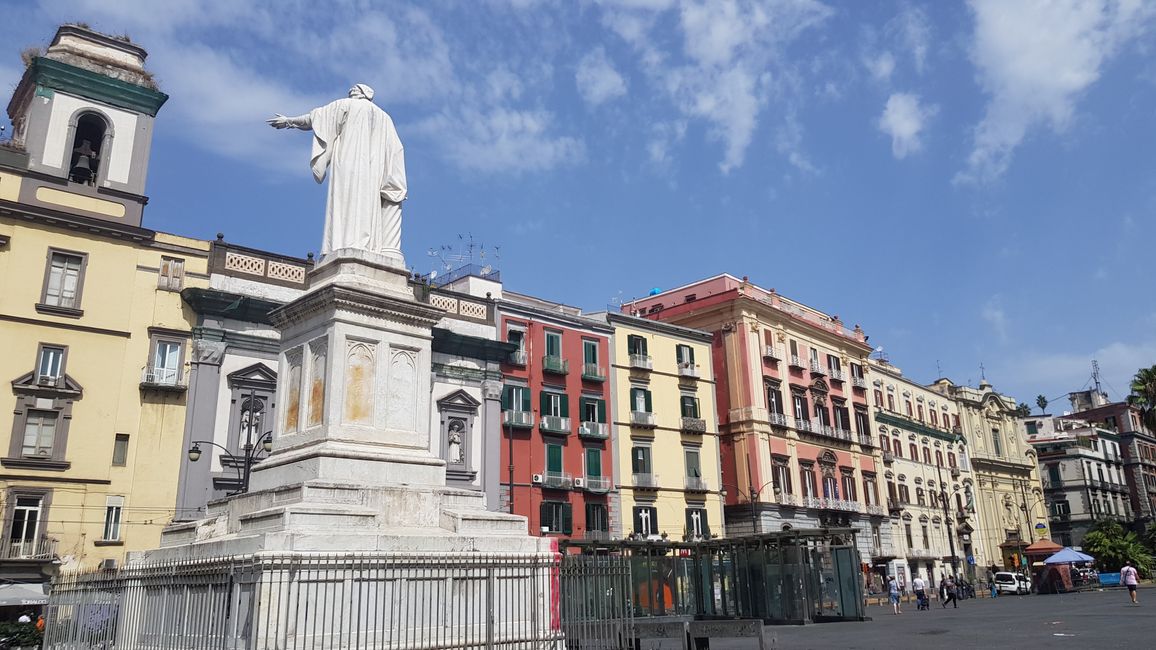
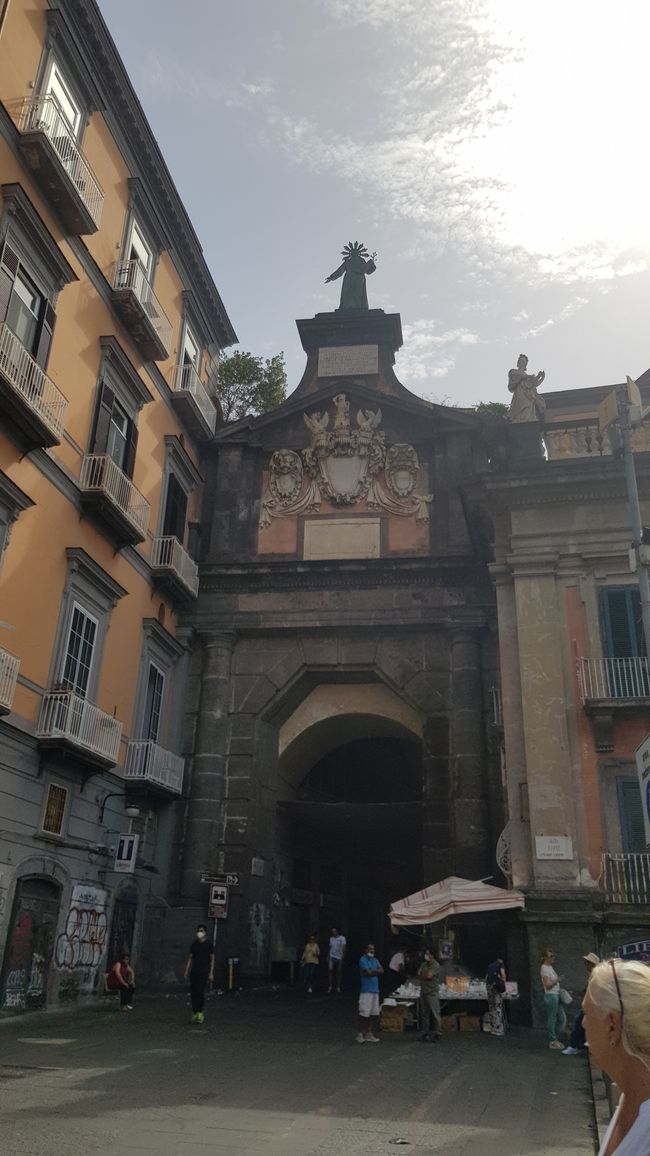
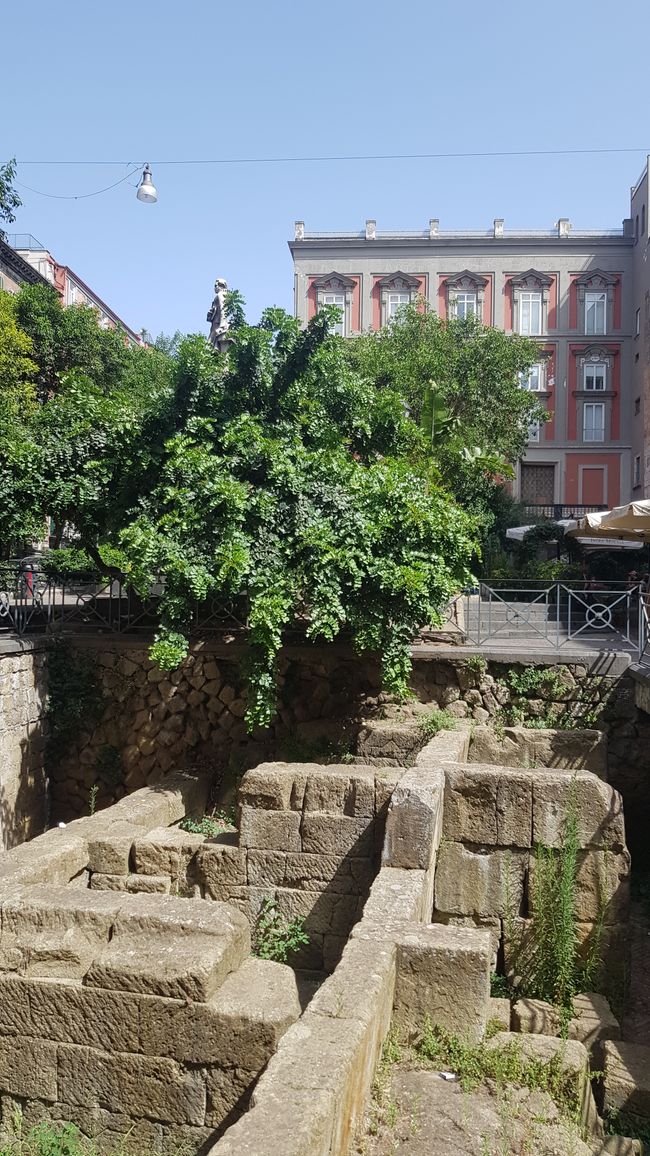
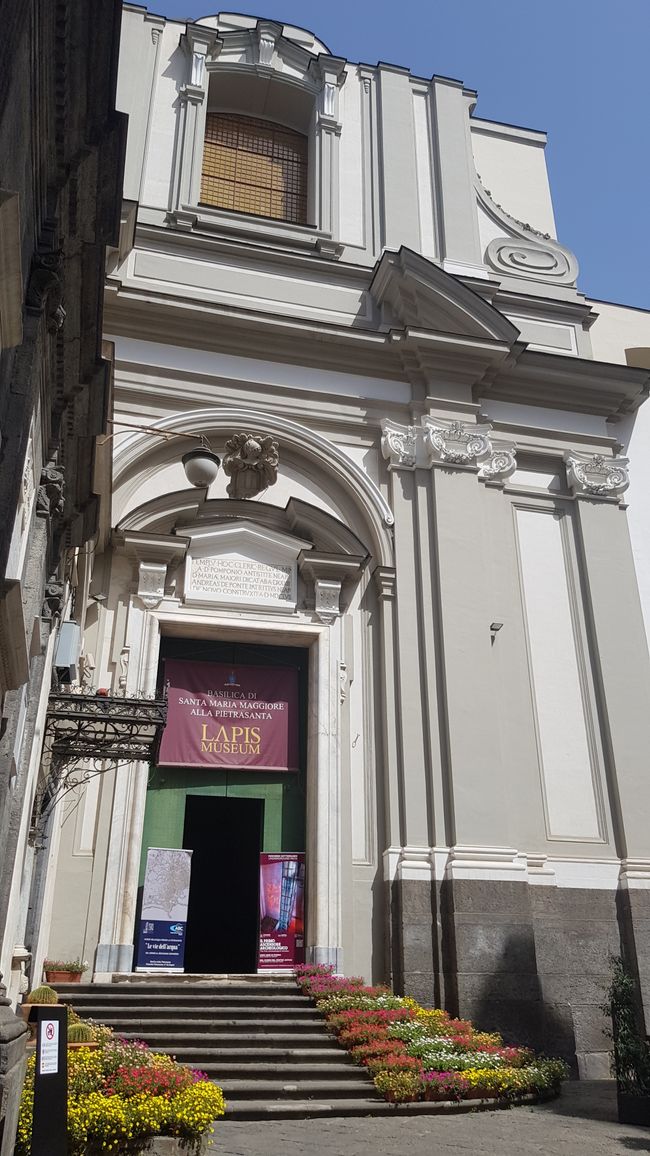
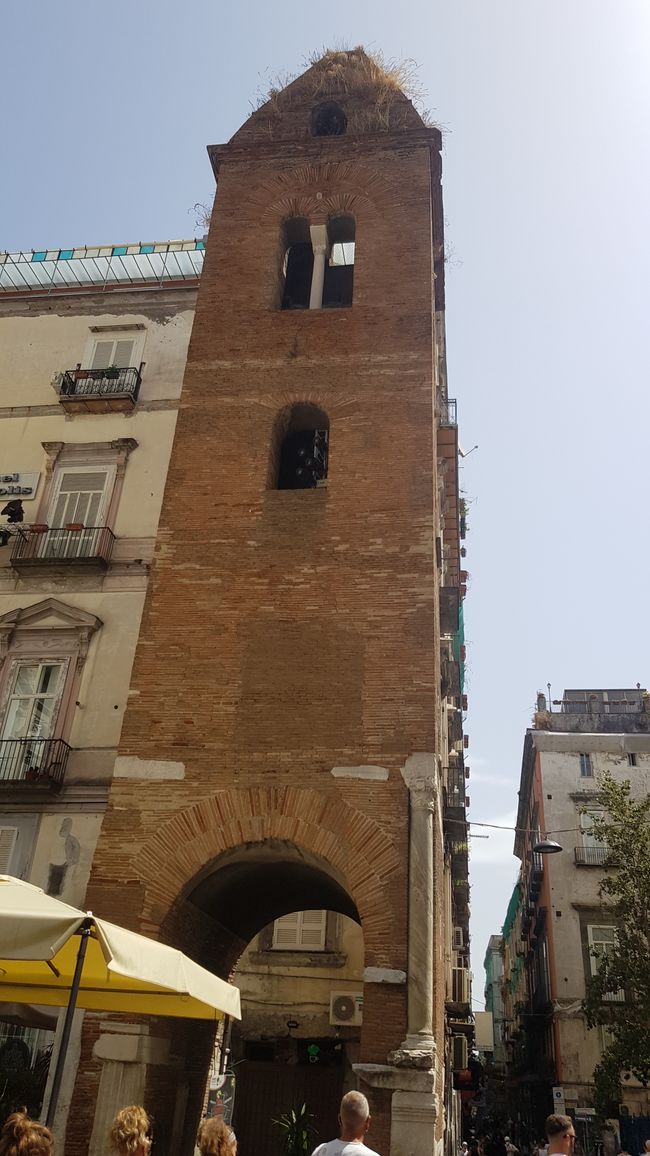
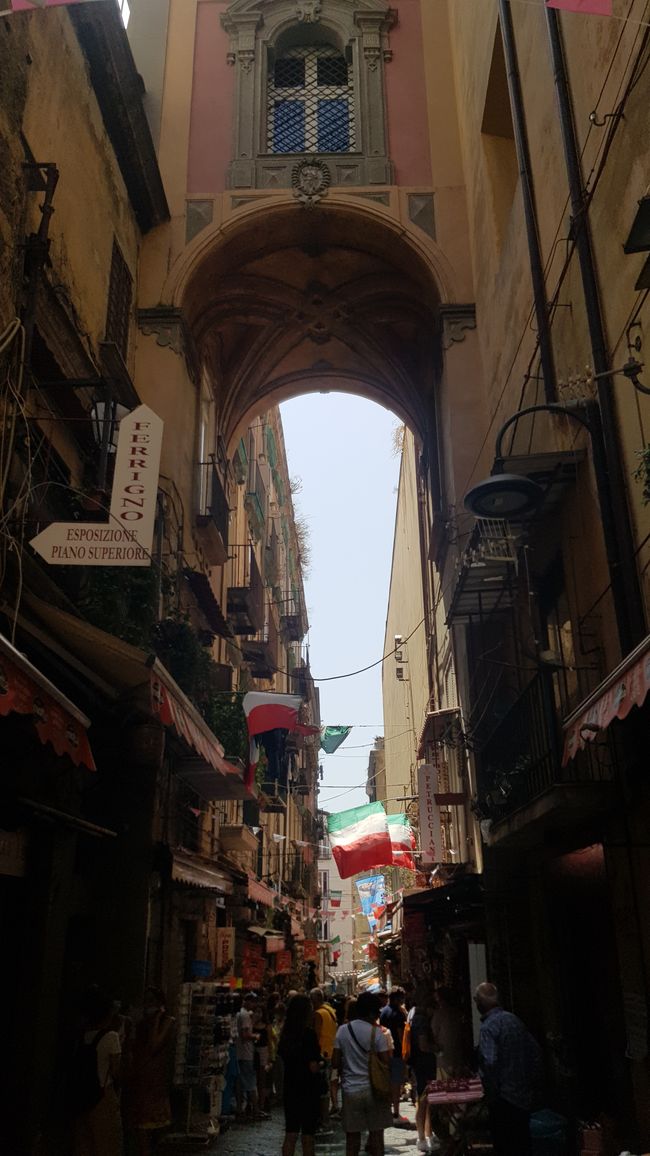
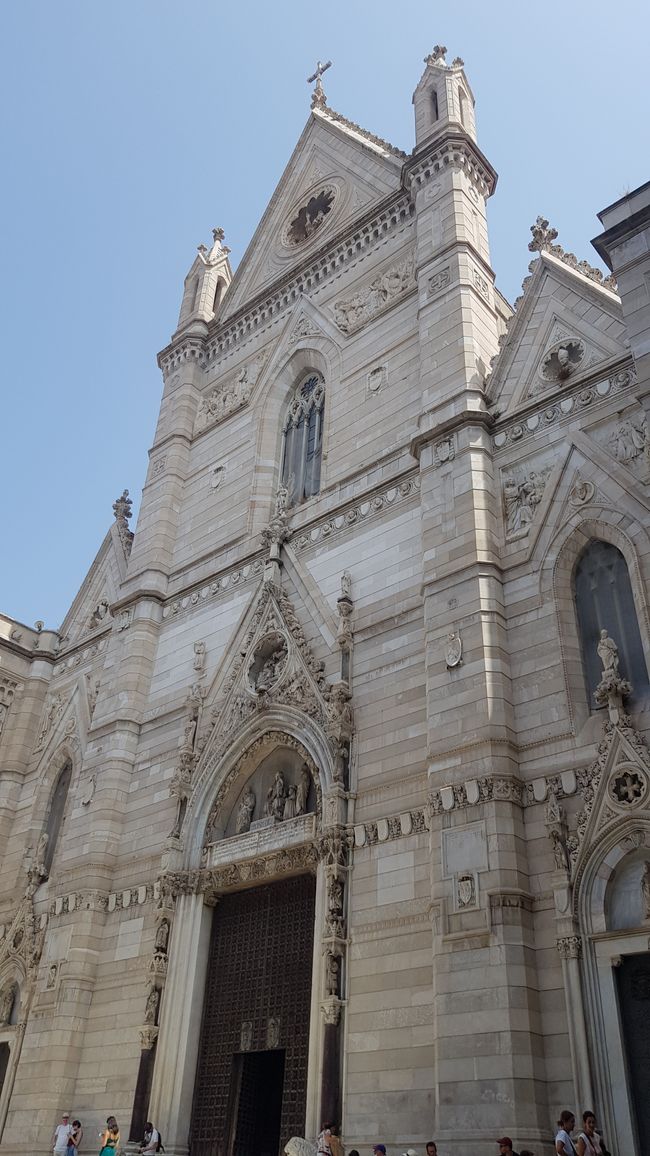

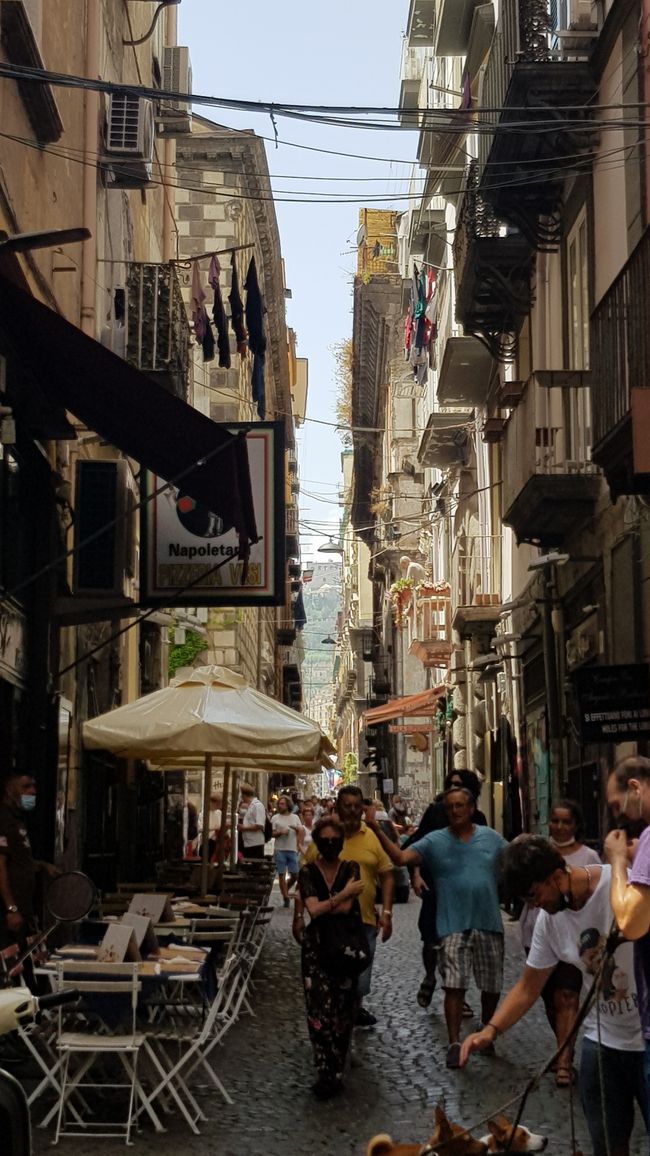
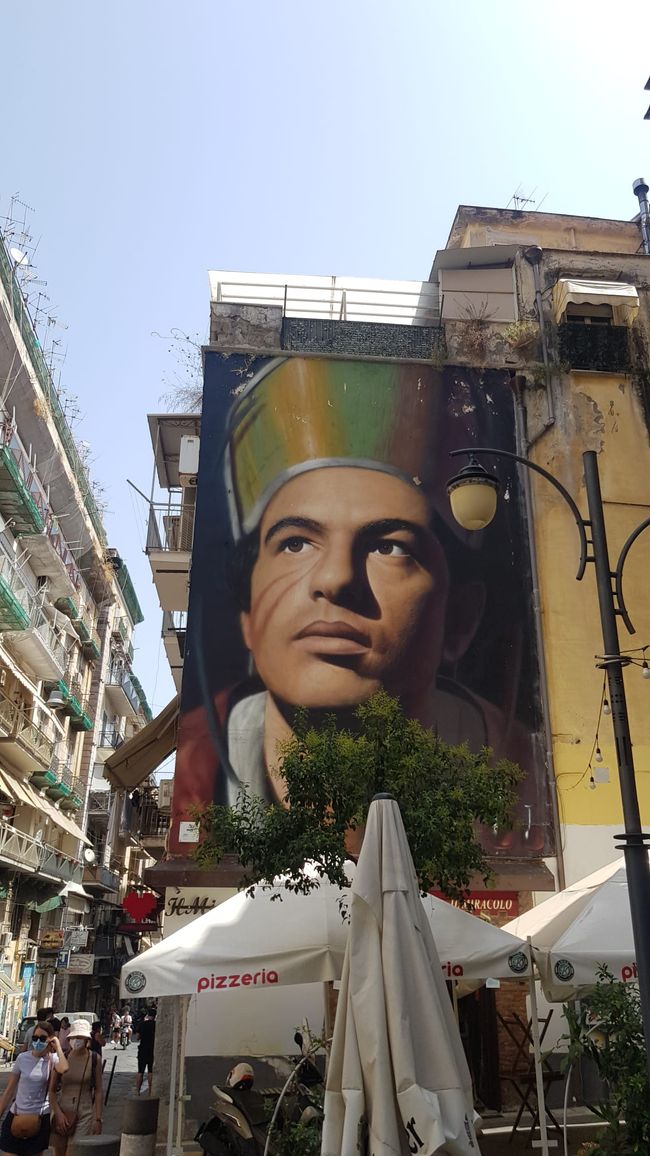
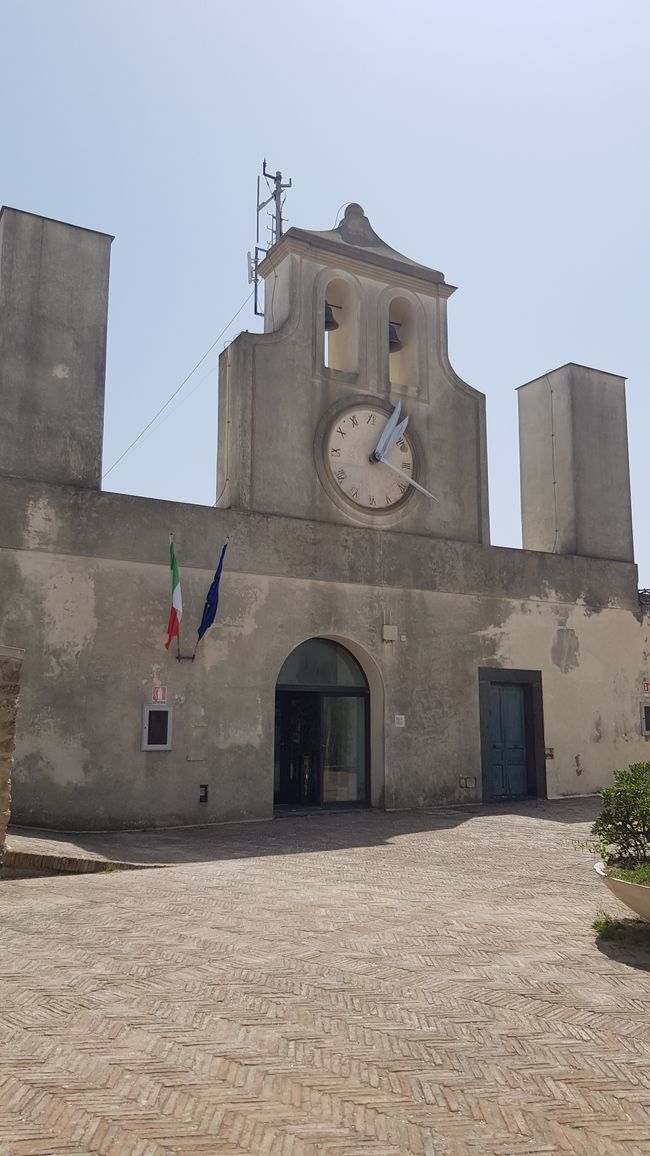
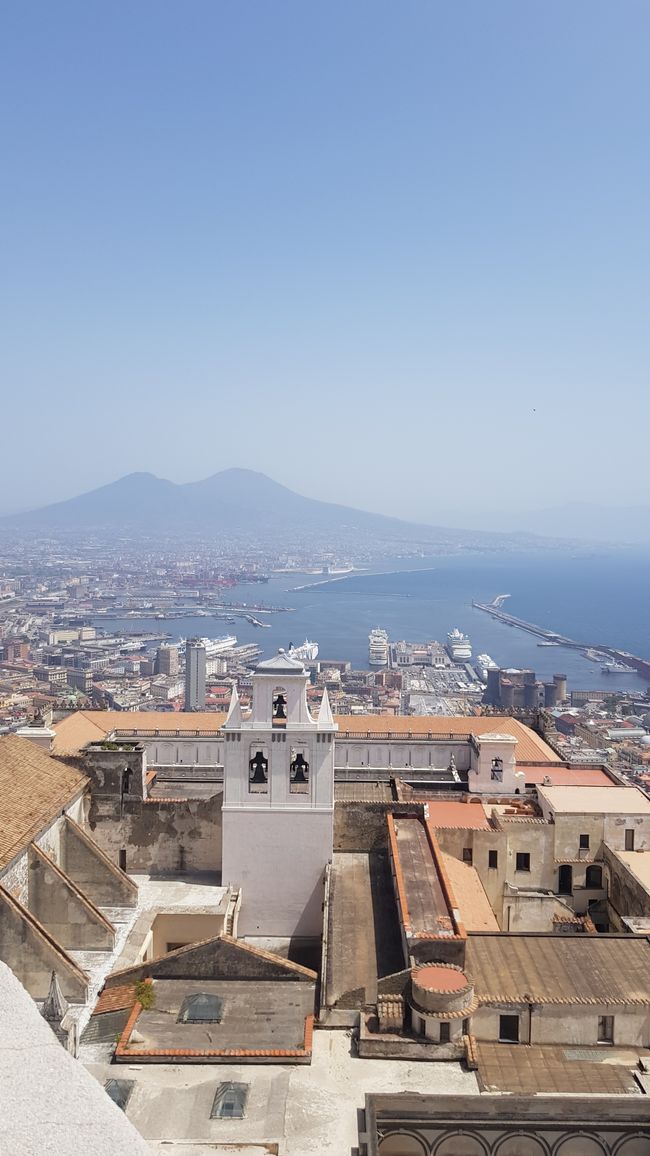
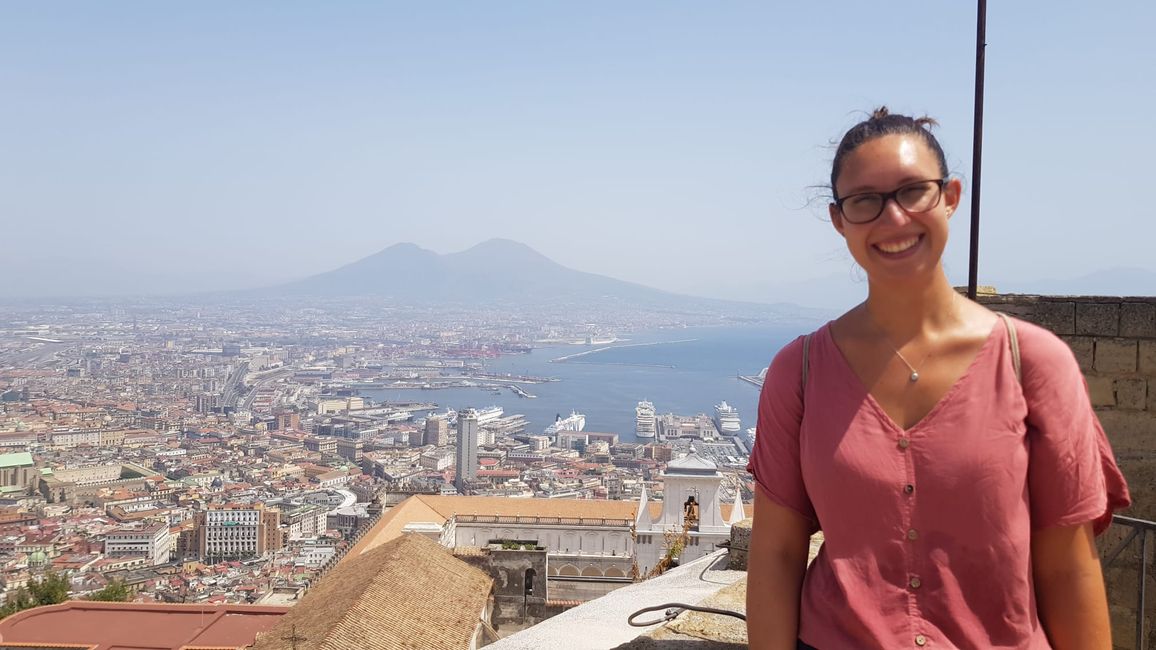
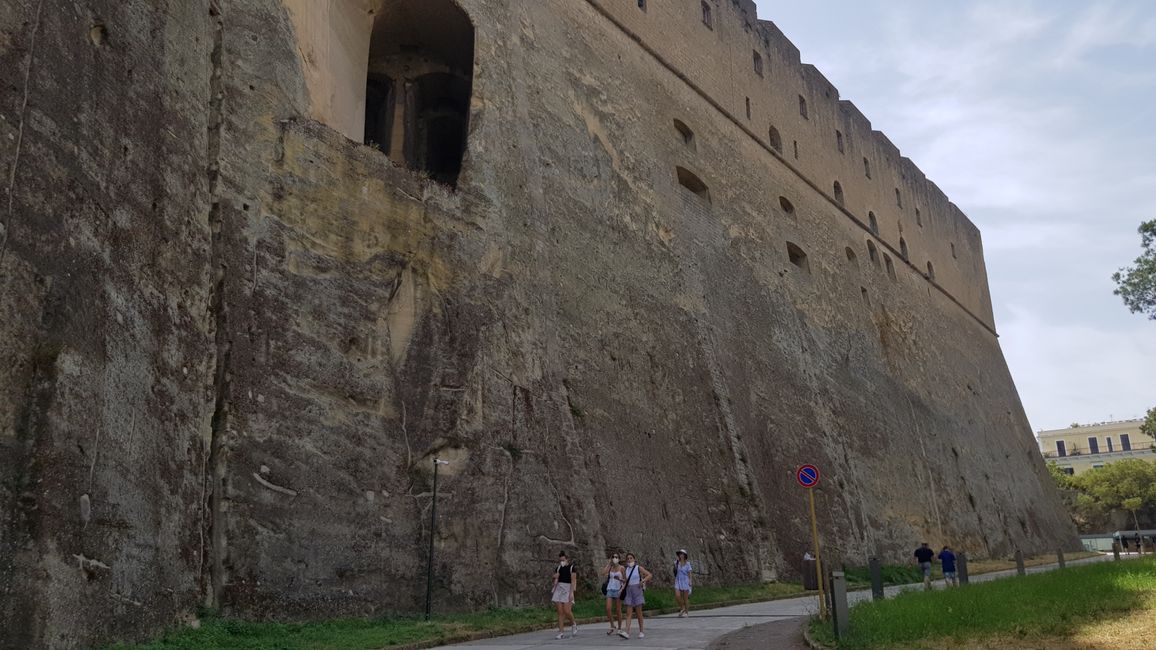
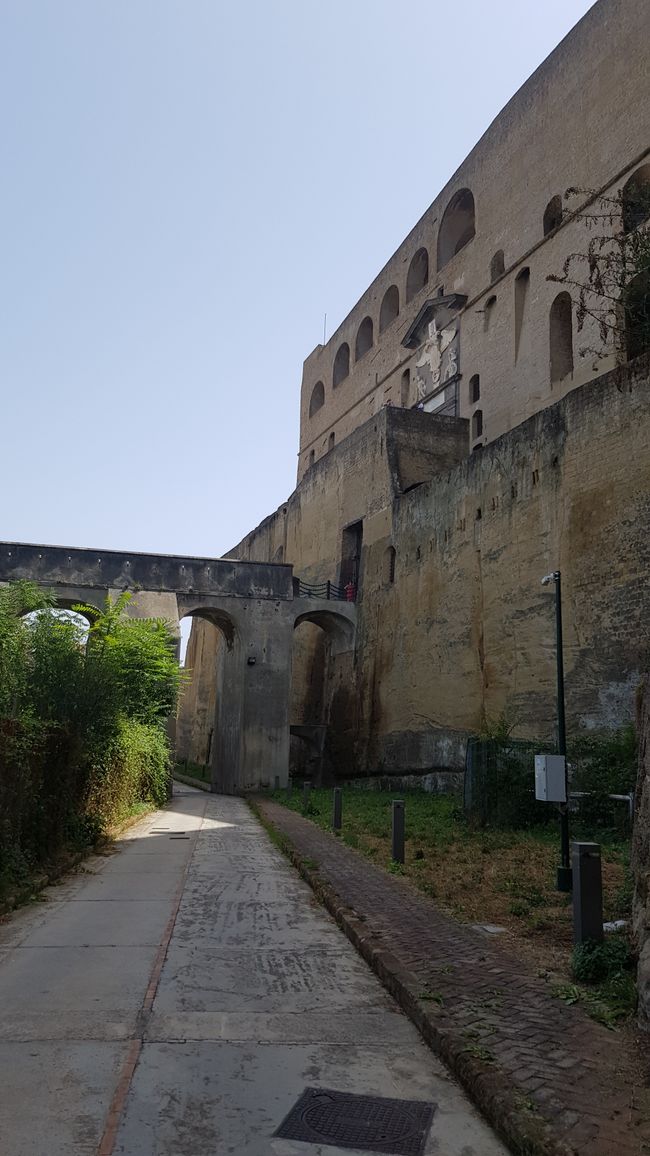
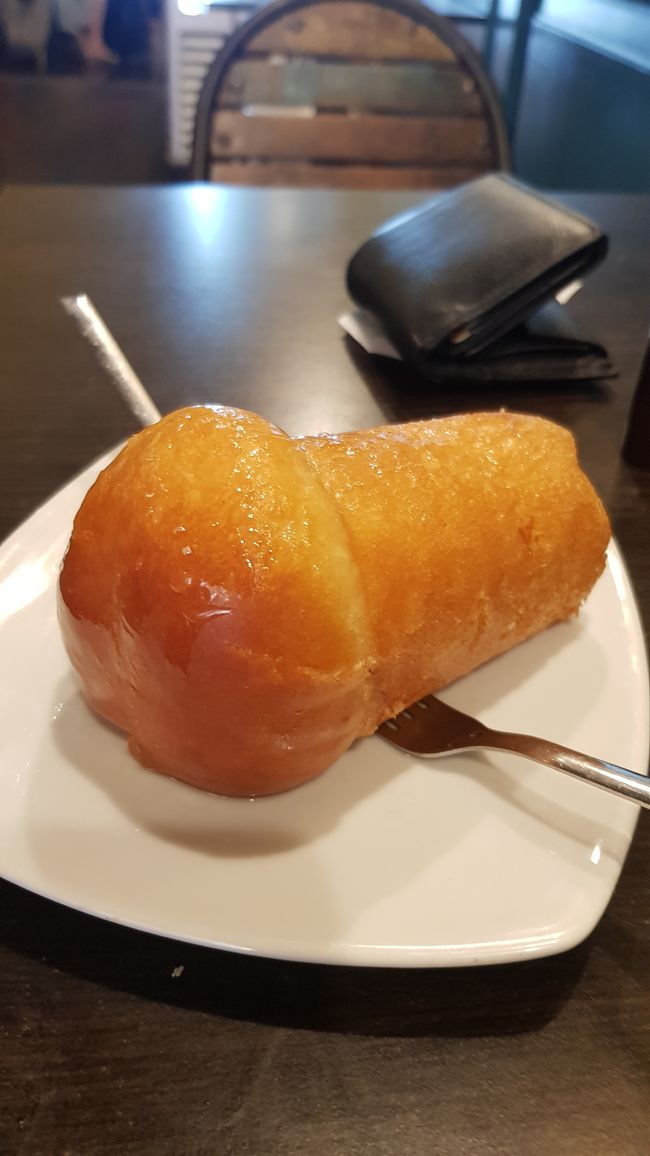
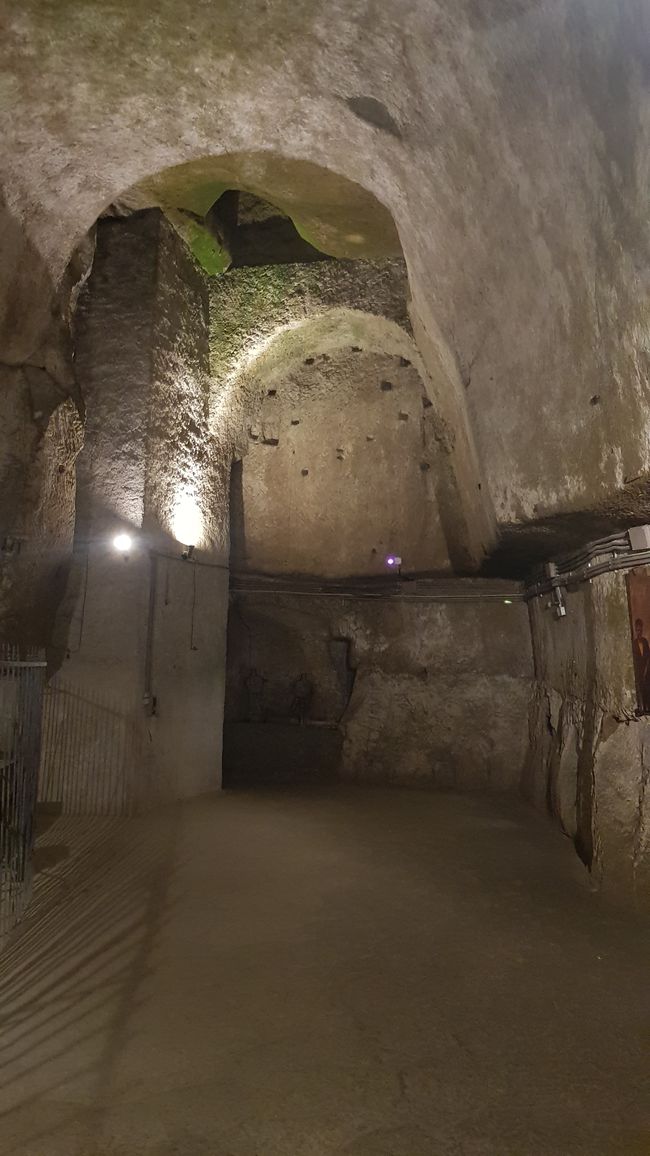
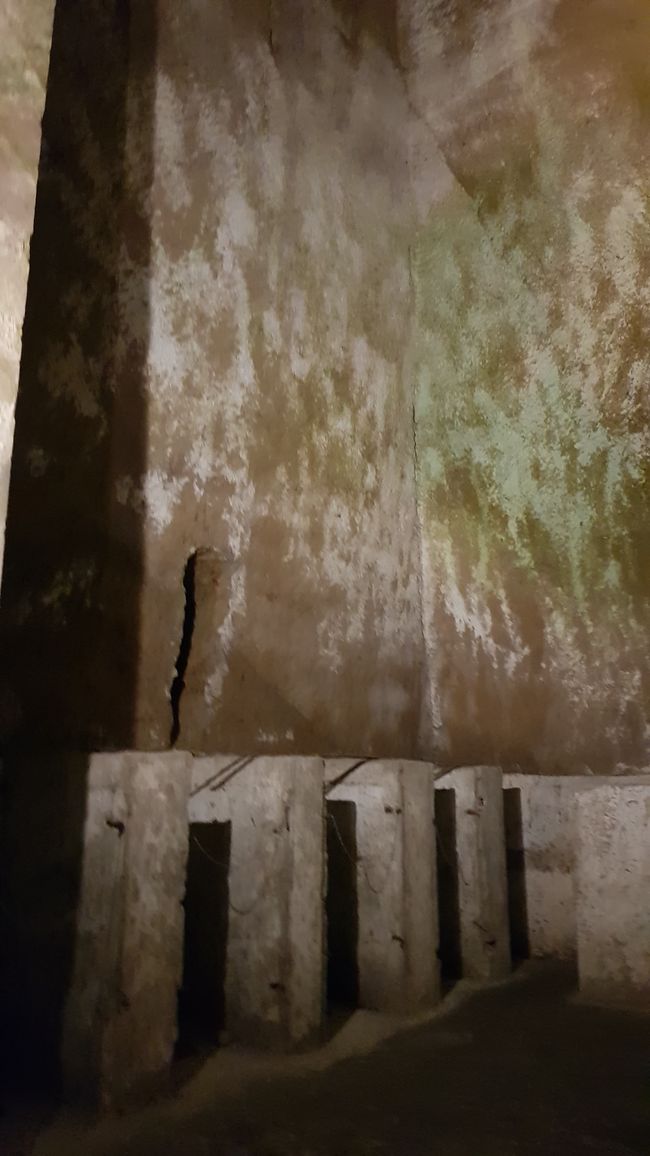
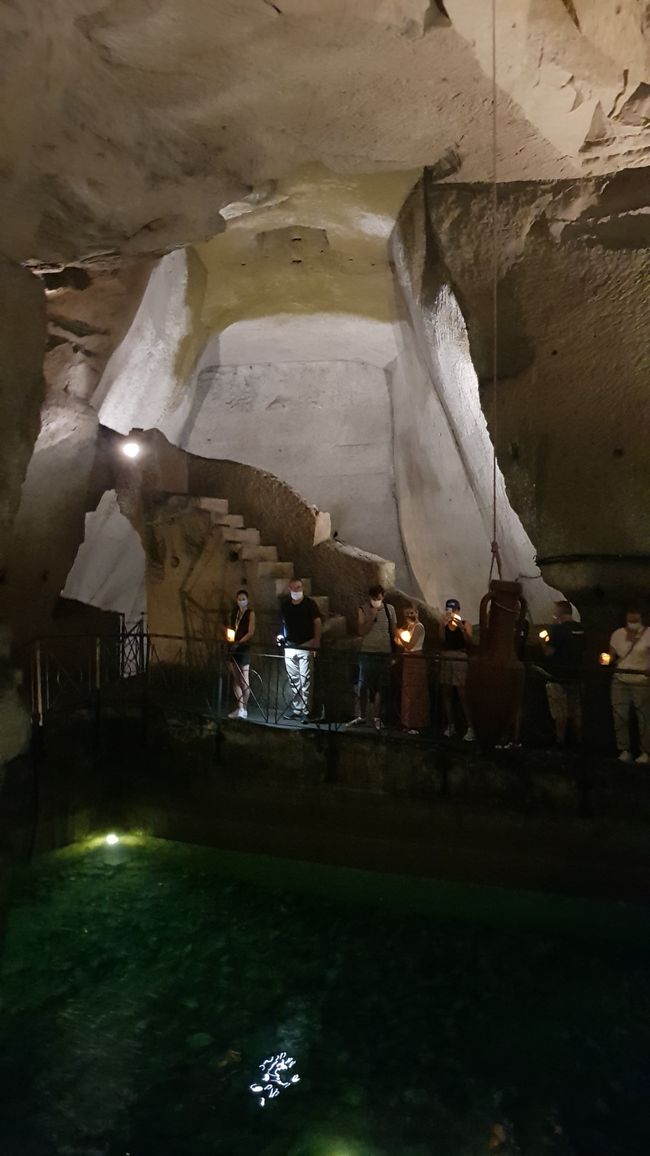
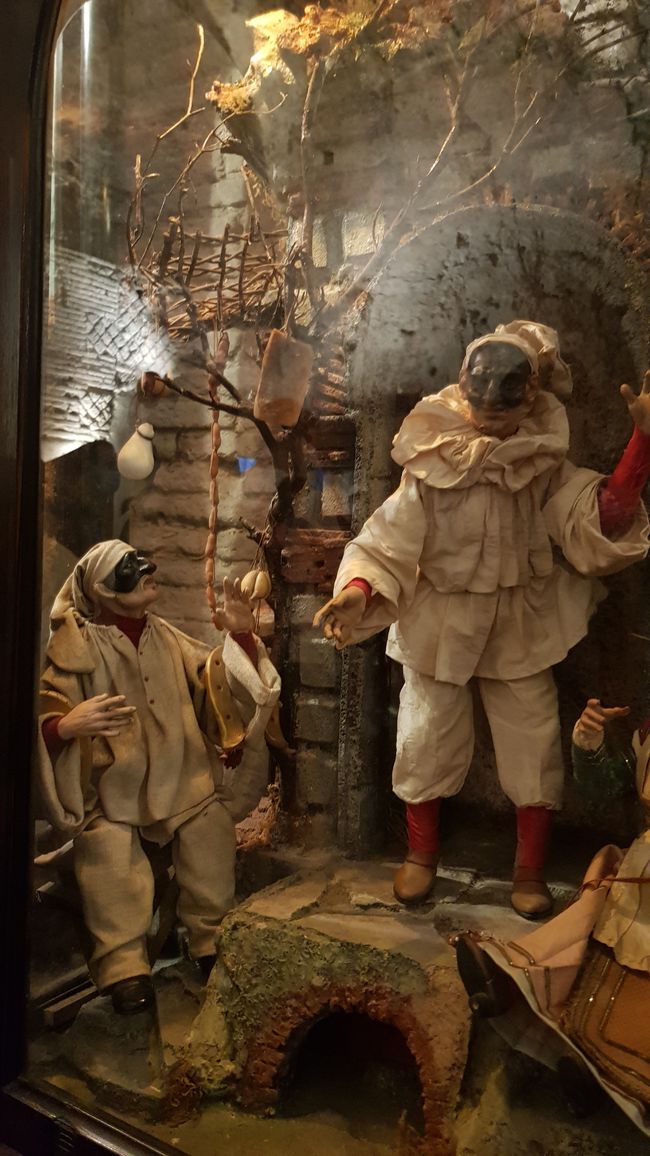
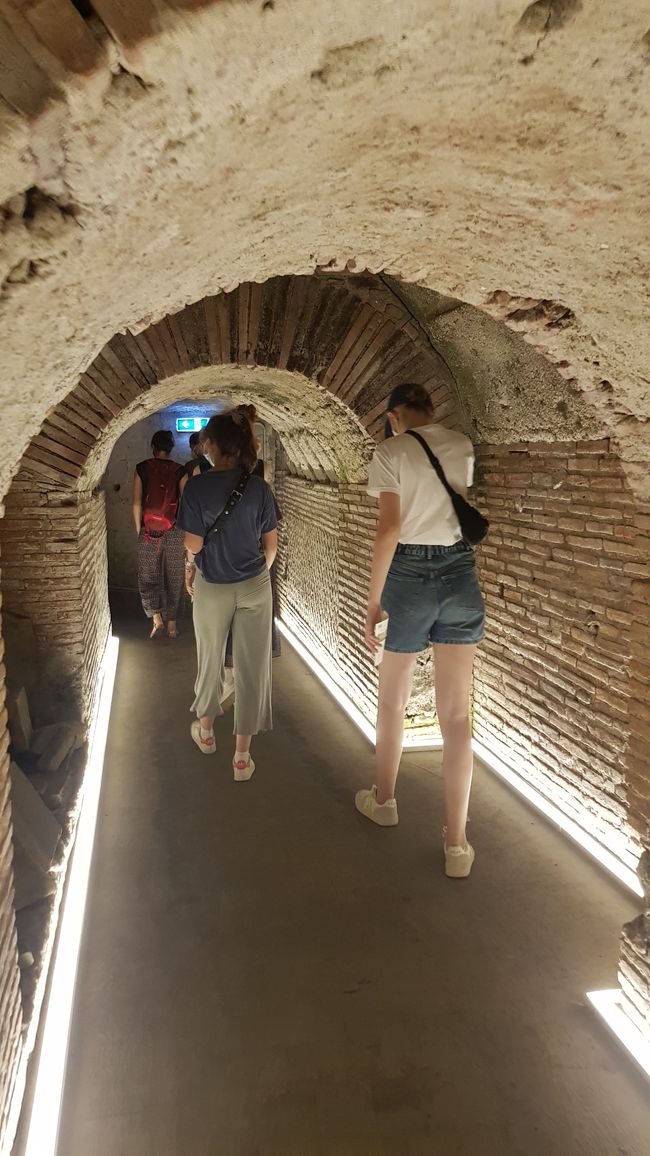
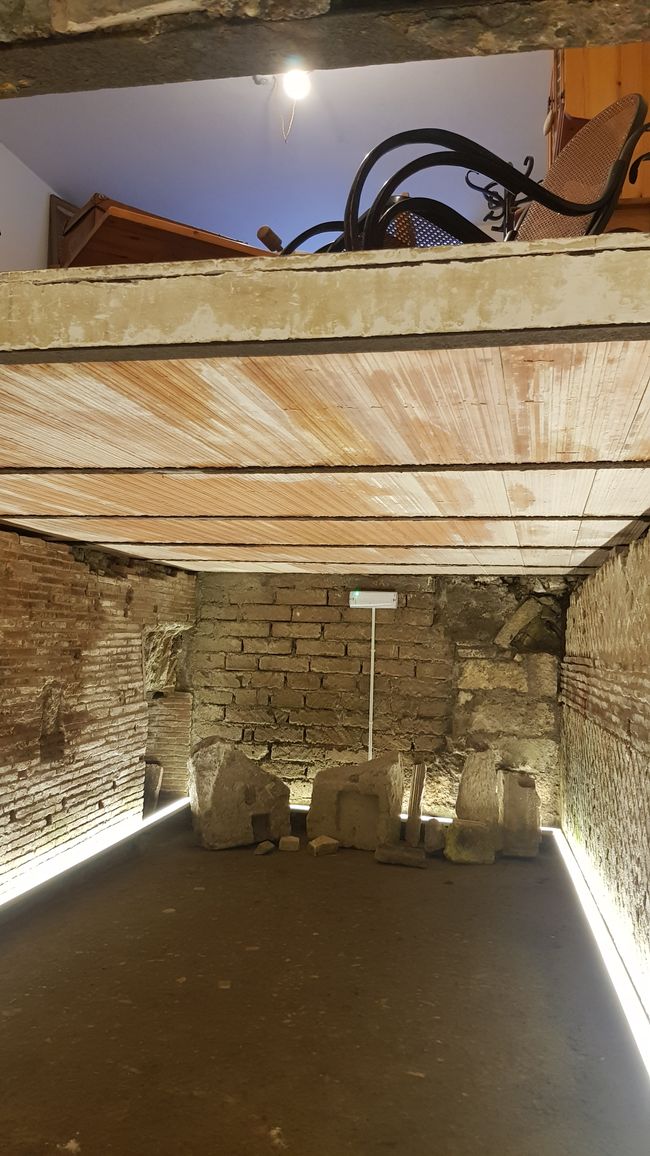

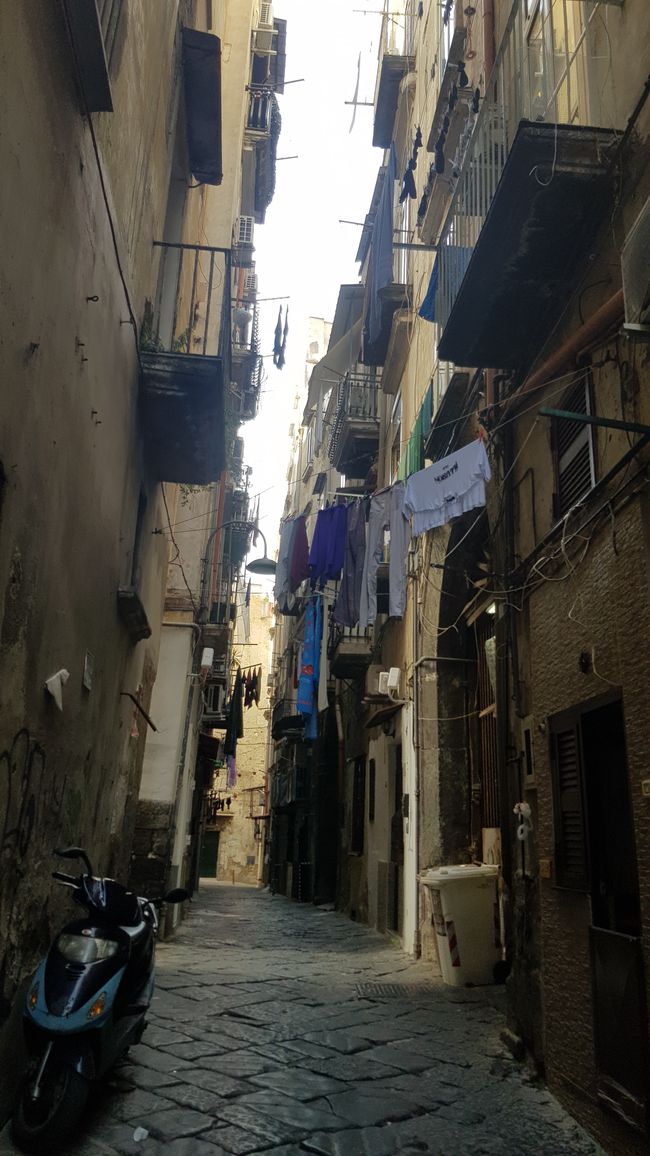
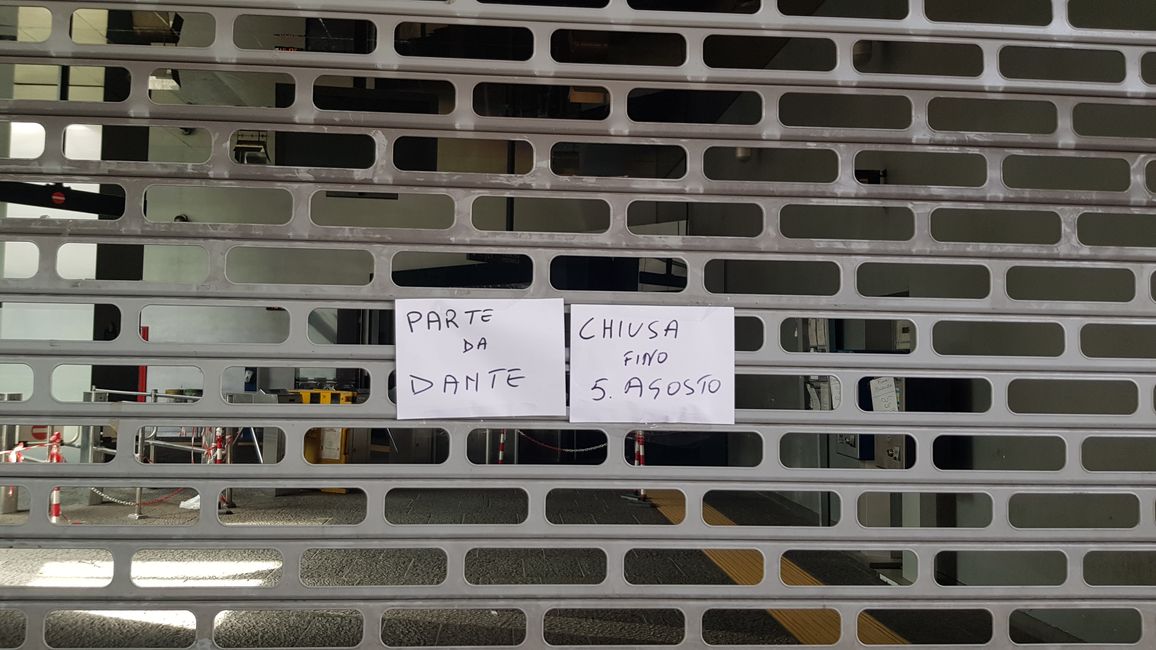
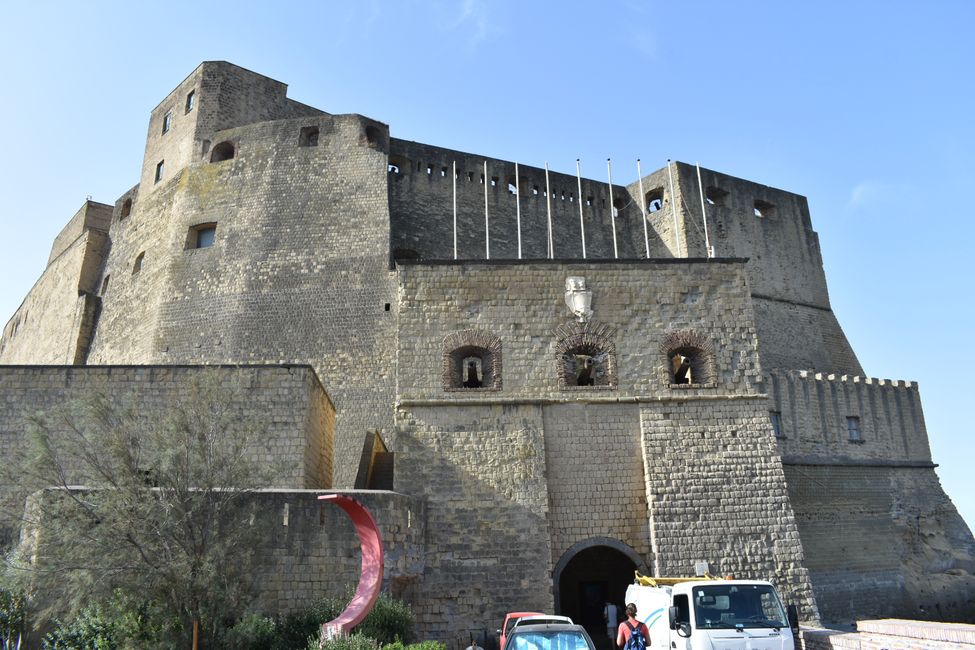
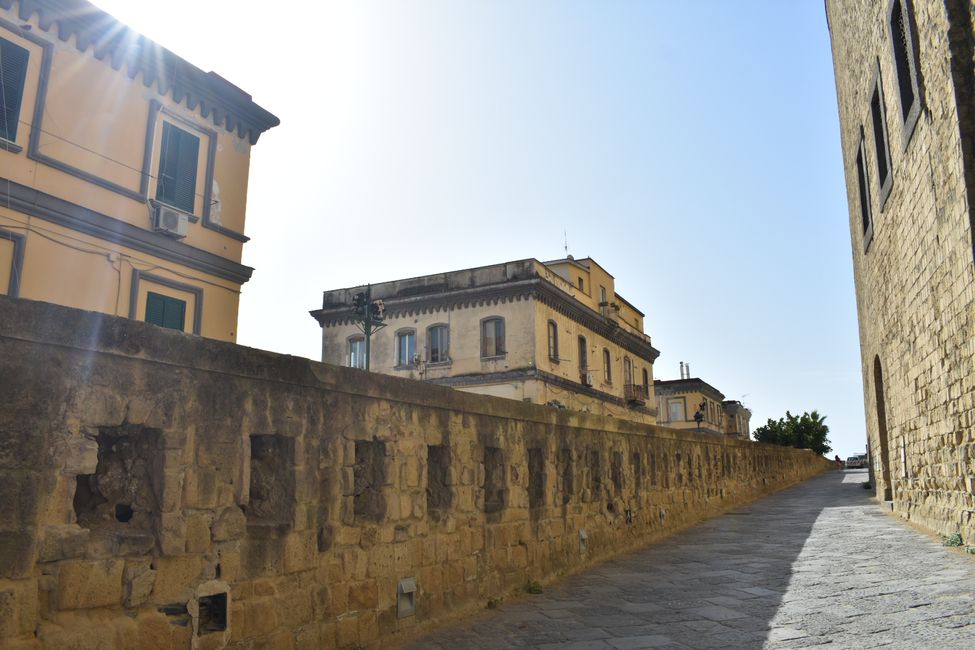
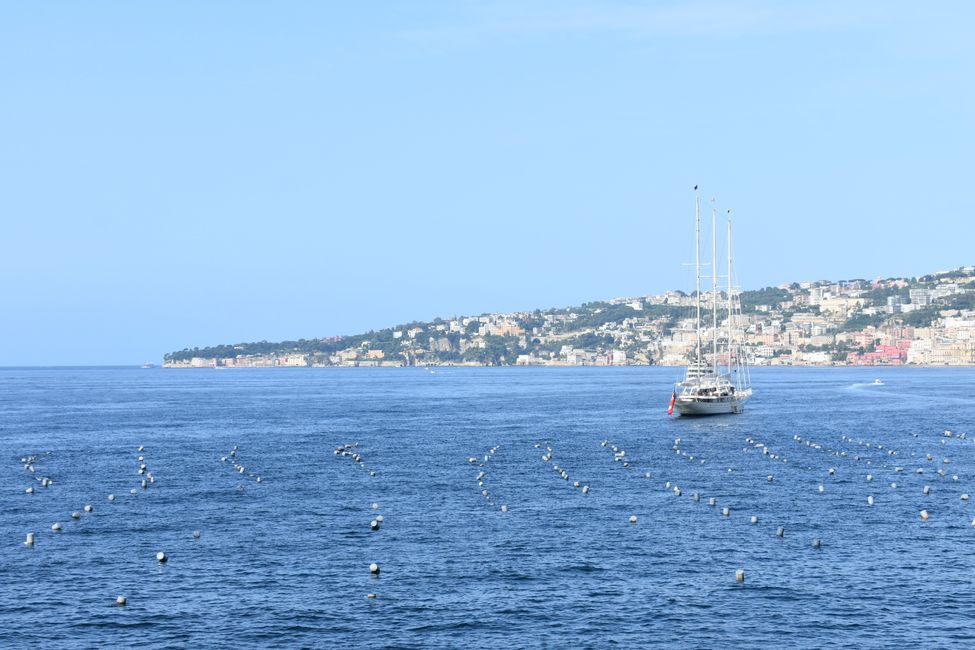
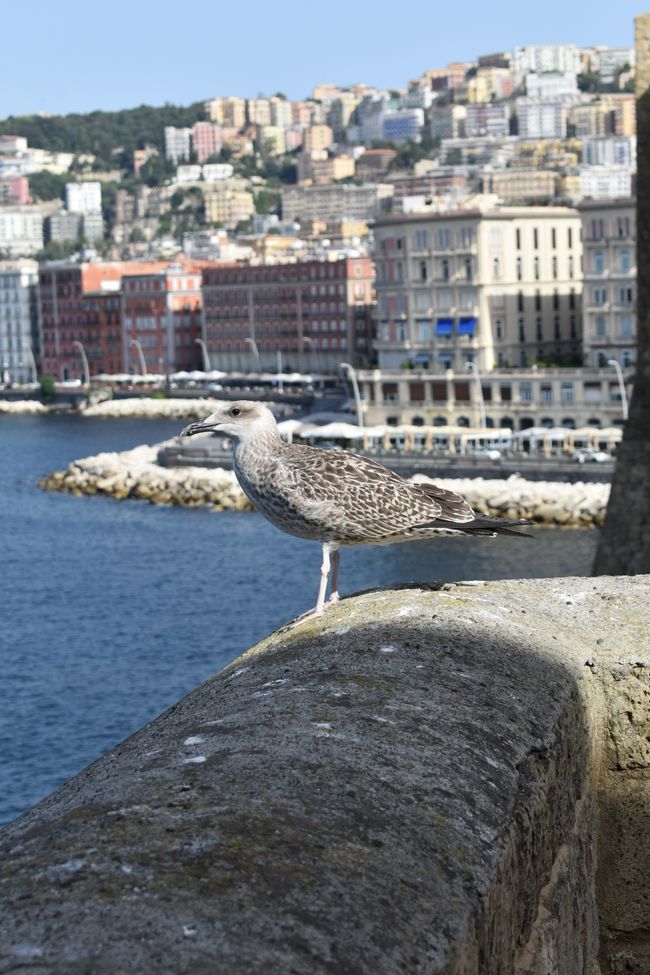
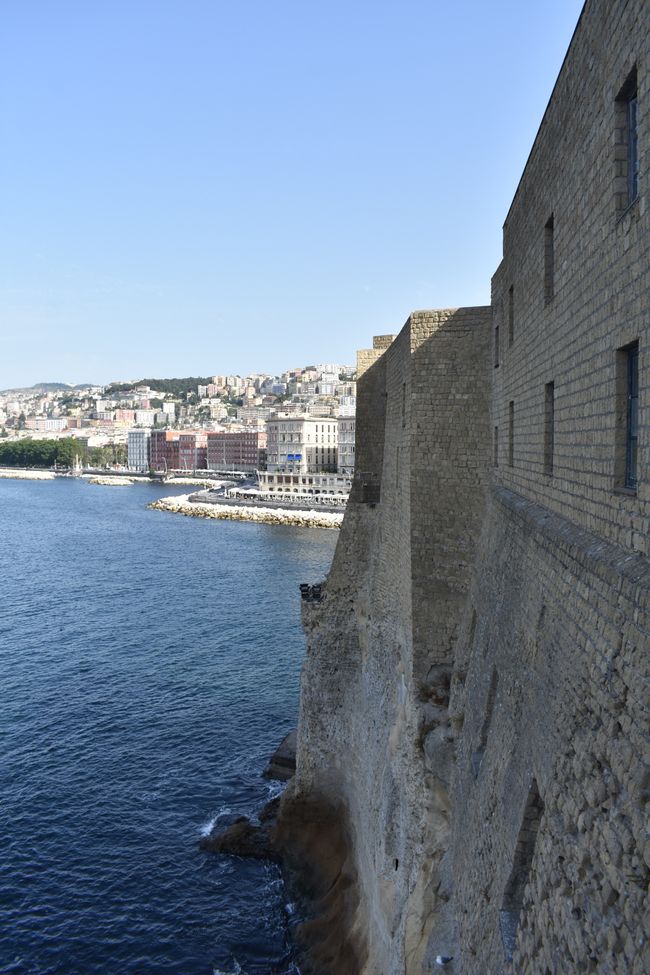
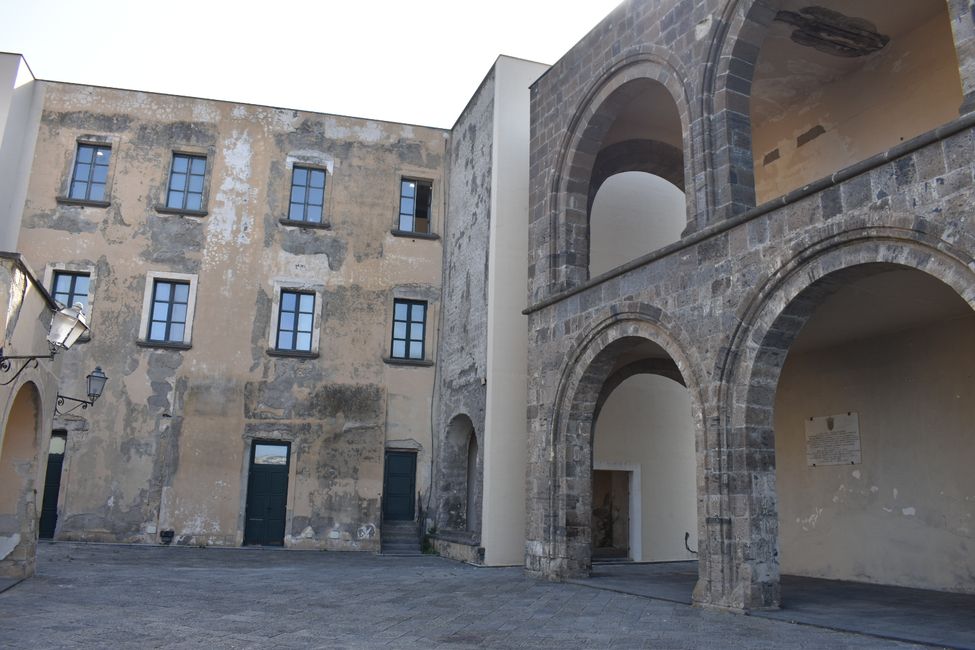
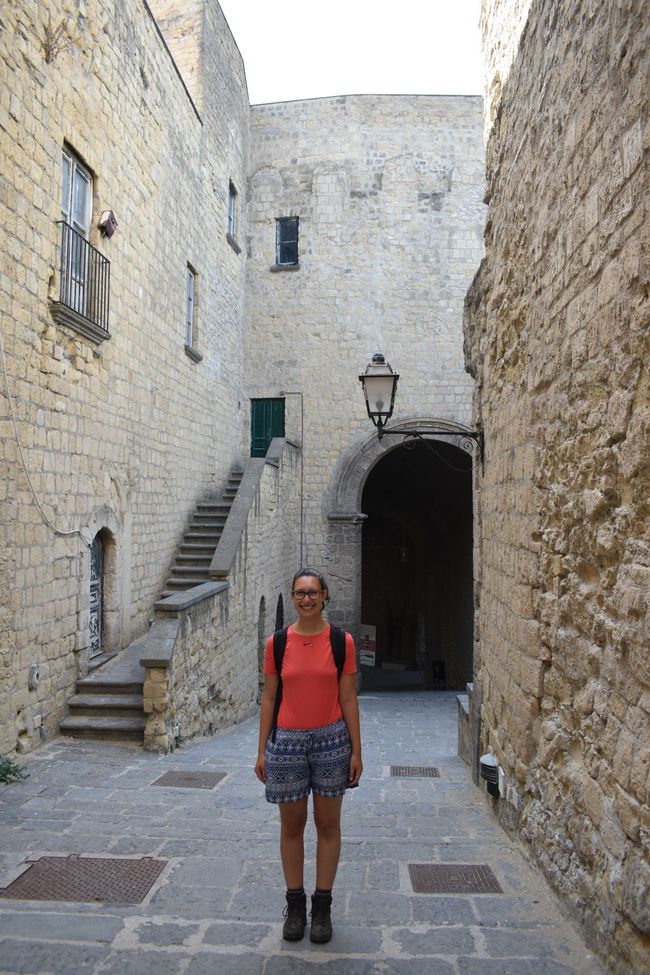
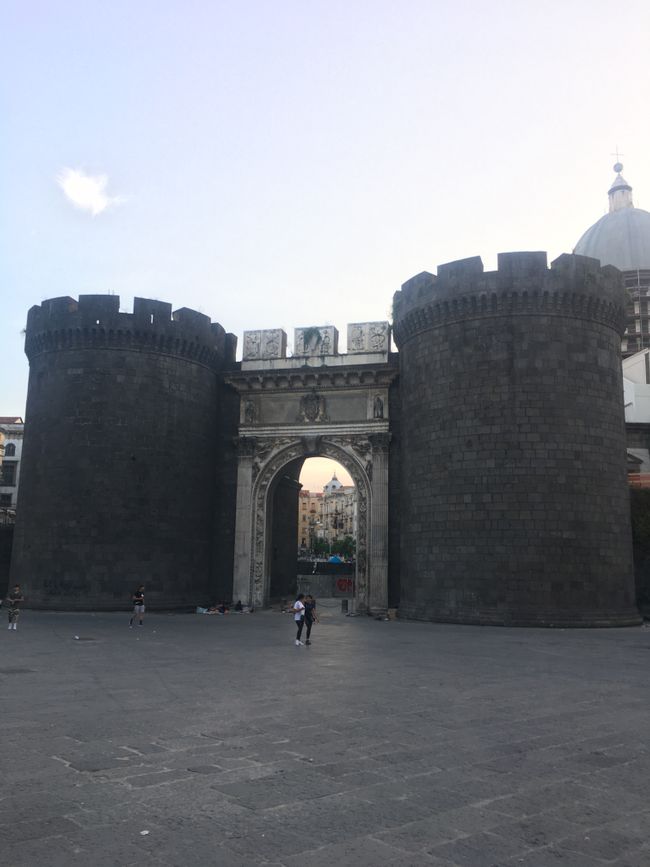
We wake up to the atmosphere of the big city and start with a delicious breakfast that we get at our accommodation. It includes a basket of Biscotti, Zwieback, jam, and Nutella. Each of us also gets a fresh Cornetto with red jam and juice or cappuccino. Before the Free Walking Tour, we try to book our night train back home. However, they refer us to the ÖBB at the counter, as it seems that the booking system for Trenitalia has been blocked. Then we want to get a subway ticket. Some machines didn't have tickets for Line 1, others were broken, so we have to go to the counter. Unfortunately, there is already a long queue here, and we don't have much time left. Nevertheless, we have to wait in line, and after a few minutes, we actually have our day tickets for public transport (€3.50) in hand. The platform is already quite crowded, especially because it is very small. You can't have claustrophobia down here.
15 minutes after the start of the tour, we arrive at Dante Square. We hope they work on Italian time and are still waiting. Luckily, we find the Free Walking Tour and can join in. We probably haven't missed much.
Naples is the third largest city in Italy with almost 1 million inhabitants, and it is an economic and cultural center of southern Italy. The original Greek settlement was called Neapolis (New City), later it came under Roman rule. From the Late Middle Ages to the 18th century, Naples was one of the largest cities in Europe. In addition to many periods of foreign rule, the city was also the capital of several southern Italian kingdoms. Our tour takes us through the old town, which was declared a UNESCO World Heritage Site in 1995. Our tour guide explains that the old town is oriented towards three main parallel streets (Plateia). The crossing side streets create so-called plots. This hippodamian scheme is typical of ancient Greece.
From Dante Square, we walk through Port'Alba to Piazza Bellini (Artists' Square), which is located in the middle of the student district. Here we also come across the first Greek walls. These and all other excavations shape the cityscape of Naples. We continue our way on Via dei Tribunali, also known as the 'Pizza Street'. We are excited that our expectations are being fulfilled and that we are now talking about pizza. Pizza is of course important because the most famous Margherita pizza was invented in Naples. It represents the three colors of the Italian flag - green for basil, white for mozzarella, and red for tomatoes. She recommends either a Margherita or a Marinara (tomatoes, garlic, olive oil, and oregano). All other pizzas are not typically Italian - especially those topped with pineapple. She also tells us about fried pizza. But it's not just pizza that is fried here, everything else is too. She suggests that we eat at one of the older pizzerias on this street because everyone goes there for pizza - including the locals.
It's also about churches again. Our guide says that there are over 500 churches only in the Centro Storico of Naples. Wow, how is that possible? In Ohrid, there were (no) 365....? Of course, not all of them are in use anymore, some are also hidden. She illustrates this phenomenon to us at the Basilica di San Paolo Maggiore, which is also located on Pizza Street. In ancient times, this was the main square, and the Greek temple of the Dioscuri was located here. Columns from this temple can still be seen in the tower of a former Byzantine church in front of the new basilica. So you have three churches in just one square. We continue walking and discover a church whose façade is adorned with skulls. At this spot, there was an underground mass grave. The builder of the Chiesa di Santa Maria delle Anime del Purgatorio ad Arco wanted prayers to be said for these souls and built the church for this purpose. The church itself is also a UNESCO World Heritage Site.
We move on to the upper Plateia, where we talk about archaeological finds again. There are 2 ancient amphitheaters in Naples, one of which was only recently discovered. A family in their small ground floor apartment (Basso) found this long sought-after theater during renovation. Parts of it can now be visited as a museum, entering through the apartment.
As we walk through the streets, we wonder about the many red pepperoni on jewelry, decorations, etc. Our guide enlightens us: firstly, it is a horn and not a pepperoni, and secondly, it is an important good luck charm for superstitious Neapolitans. But they are not only superstitious, they are also very religious. Naples is well known for its nativity culture. In Vico figurari, we get a small impression of this. Here, in August, everything that could be used for a nativity scene is sold, from classic to completely crazy. From wood carvings to puppet shows, every nativity scene must be unique, which is why you have no chance of taking a step here during the Christmas season. One figure that also has its place in the nativity scenes is Pulcinella from the Commedia dell' Arte. If you don't know who or what that is, you should refresh your knowledge with the help of Google.
We end our tour at the Chiesa di San Giorgio Maggiore. There is a large mural of the city's patron saint, San Gennaro, who performs an important miracle every year. His blood, which is kept in the crypt of the cathedral, must be liquid on September 19th so that no disaster happens to the city that year. But when she even explains why Covid-19 was not a disaster for the city (because the blood was liquid last year), we find it quite absurd. By the way, we read that the blood appears to be liquid due to movement, and that's how the 'miracle' happens.
After the tour, we visit the Cathedral di Santa Maria Assunta with its crypt. Finally, a church that is free to enter and also really impressive. The very high nave and the ceiling and column decorations are impressive. The blood, however, not so much.
We walk along Pizza Street towards the hill where Castello Sant'Elmo is located. We actually want to take the funicular railway up, but we can't find it right away and have to struggle up the hill in the heat. The funicular railway is also part of the public transport network. Thanks to maps.me, we can at least take the train up one station and then visit the castle. Admission is only €2 for EU citizens under 25 years old (€2.50 for others), and you can enjoy a beautiful panoramic view. In the direction of Vesuvius, you can also see the beautiful San Martino Monastery, which we don't visit because we can't find the entrance. By the way, we were also recommended to visit the Castell dell' Ovo, the Palazzo Reggia di Capodimonte, and the Palazzo Reale in Caserta. The latter is said to be even more beautiful than Versailles, but we couldn't check it out. We plan to visit the Castell dell' Ovo the next day.
Today, we want to take a tour of the underground of Neapolis. But first, we need a snack. To check everything off our list, we have a pizza al portafoglio (folded together) and a pizza fritta (fried dough). It tastes really better than we thought.
We also want to try babà, a pastry made of beer yeast dough soaked in rum. Pretty tasty, pretty heavy. It's a good thing we're still moving. Neapolis Sotterranea was recommended to us for the underground tour. Admission costs €8 (students, otherwise €10). We enter the bunker system of World War II, which was previously part of the enormous aqueduct and before that used for mining building materials. We talk a lot about World War II in general until we enter the narrow passages of the former aqueduct. And yes, we just barely fit through, so you shouldn't be afraid of tight spaces here either. This part of the tour is amusing but also a bit strange. The aqueduct was clearly not built for walking through. Above ground, we are led to a nativity scene exhibition, from where we continue to the amphitheater in the Basso. As described, you enter the ruins through a trapdoor in the ground. Nevertheless, you need a lot of imagination to envision a theater here. Not enough has been excavated as people still live everywhere else. The other underground tour (Neapolis Sotterrata) includes the ancient agora, which we would have liked to see as well. If you're looking for excavations, you might not want to choose Sotterranea.
But that was enough sightseeing for one day. We return to the B&B to organize a few things, which of course takes longer than expected. At the ÖBB, we are informed that all night trains for this week are fully booked, and there is rail replacement service between Brenner and Innsbruck. Allegedly, we don't need a reservation for the EC trains during the day - there seems to be a connection, let's see if it works (we will report...). For Vesuvius, there are only free entry times from noon onwards, we need accommodation in Salerno, and we have to reserve Castell dell' Ovo...
After that, we really deserve a good dinner! PIZZA! We go to the next trattoria around the corner and eat Margherita or Marinara as recommended. We also have a glass of red wine, which is actually more expensive than the pizzas. Now we feel good again, stress forgotten. We are thrilled. So few ingredients, so simple, so delicious. Tired and happy, we fall into our beds. Tomorrow starts early.
We have booked the earliest possible time at Castell dell'Ovo. The metro isn't running. There is simply a sign in front of it saying that it only runs from Dante until August 5th. Oh well, it's only 4 stations anyway. This city seems to really love chaos. Our schedule is once again thrown off by this. We take bus line 151, which takes us close to the castle. So we manage to enter with only a little delay. The castle is very pretty, located right by the sea, and therefore offers great views, especially of the fishing boats in the harbor. Unfortunately, much of it is closed (probably why the entry is free), and we finish visiting much earlier than expected. Schedule messed up again. So we still have time to inquire about the reservation for the first part of our journey back at the main train station. Don't ask, but that also goes wrong...in the end, we take a train to Pompeii Scavi for €2.80 to get to Vesuvius. We will write about that in a separate post.
After we return, there is another big debacle about the return journey. In the end, we at least have seats to Bologna. This could still be exciting. We take a walk again to Pizza Street. The decision is quite random, but we eat well again. As a starter, we share a frittata di pasta, which is pasta with endless béchamel sauce, fried. It takes some getting used to, and it's a good thing we shared it. For the main course, we have Gnocchi alla Sorrentina and a calzone. We both overdo it again. Stuffed, we walk back on foot through the streets of Naples' old town.
By the way, Naples has fulfilled all our expectations and some prejudices. The old town is mainly inhabited by the poorer population. There is a lack of infrastructure, a lot of litter is on the roadside, the buildings are partly very run-down, and the laundry hangs over the pedestrian zones. Speaking of pedestrian zones? Scooters and cars drive through every narrow alley as if it were a normal street. We have to jump aside several times to avoid being run over. Honking is part of the flair. A driver starts an argument with us when we stop for an ambulance. It's also quite strange....?
The beauty of the city may not lie in the buildings themselves, but in its atmosphere and uniqueness. In conclusion, we can only say that Naples is worth a visit not only because of the best pizza in the world.
Ŋuɖoɖo
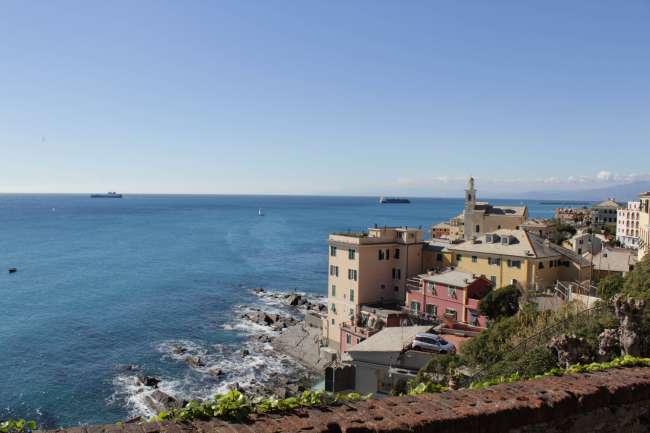
Mɔzɔzɔ ŋuti nyatakakawo Italy
